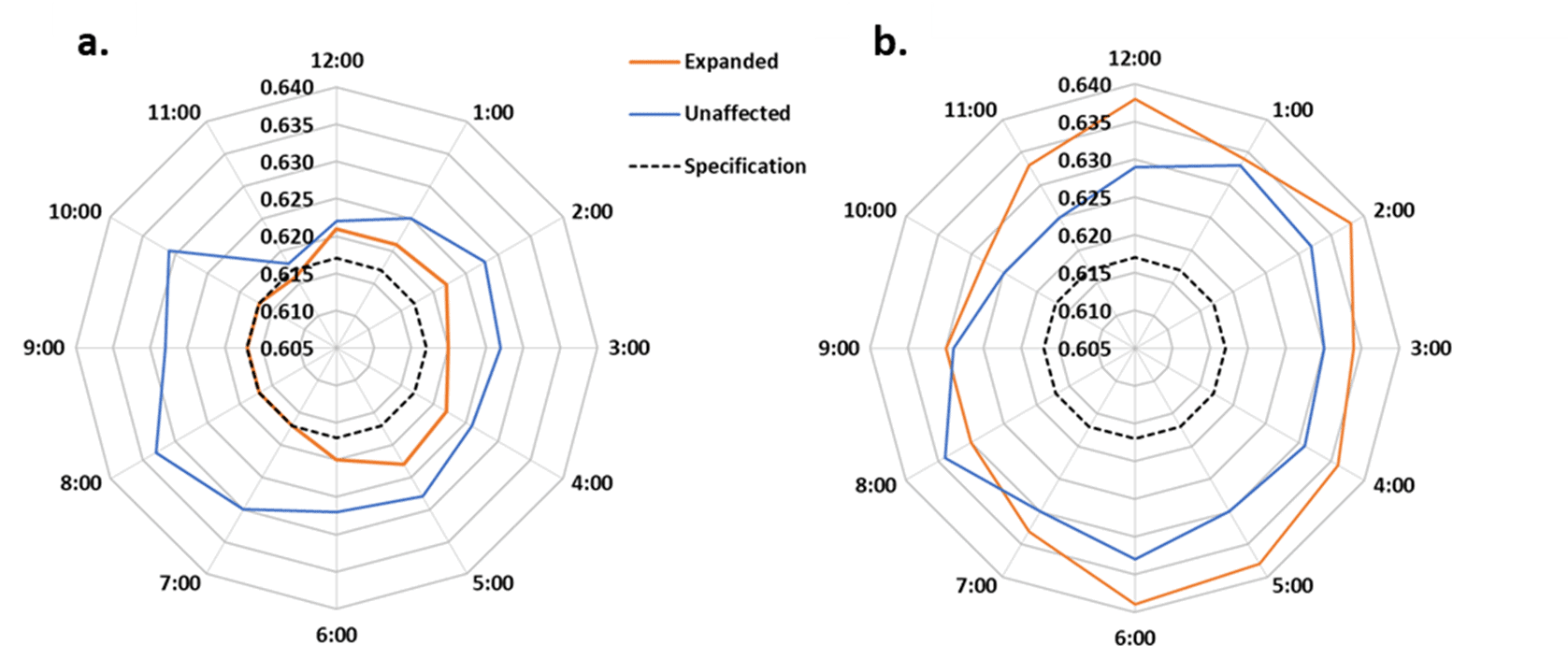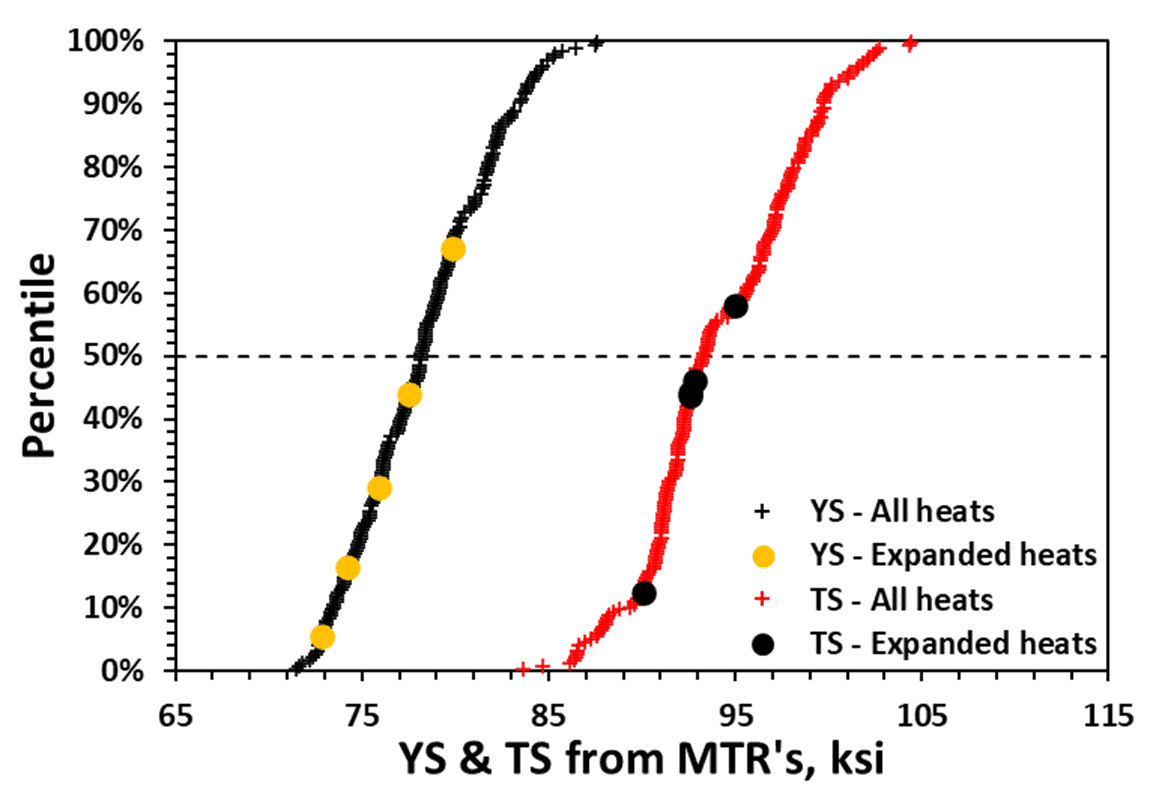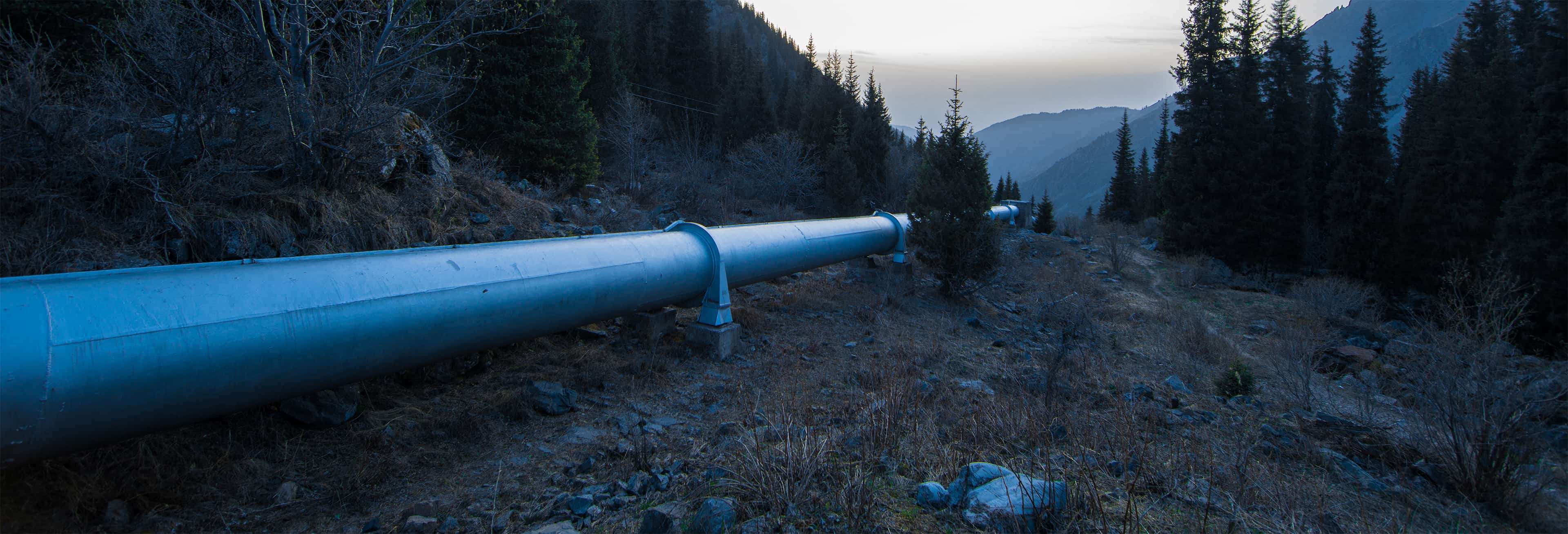Overview
Understanding of the properties and condition of pipeline materials enhances safety and provides confidence in continued operation. In addition, PHMSA requires in 49 CFR § 192.607 requires gas pipeline operators to perform materials verification for pipes and fittings for which traceable, verifiable, and complete (TVC) records do not exist. Clients use RSI Pipeline Solutions (RSI) materials verification and integrity threat assessment services to determine the grade of unknown pipeline features, establish populations of like-features, and assess operational integrity. RSI has extensive expertise in the metallurgy of pipeline steels and a deep understanding of the capabilities of the methods used to characterize their properties in the field.
The Challenge
In-line inspection (ILI) of a 0.617-inch WT, 42-inch OD, X70 natural gas transmission pipeline identified several lengths of pipe with OD expansion. Potential causes for the expansion included: i) under-thickness of the pipe wall, ii) under-strength pipe, iii) application of external forces acting on the pipeline during the hydrostatic pressure test, iv) excess pressure during the hydrostatic pressure test, and v) some combination of two or more of the above causes. RSI developed a program to determine the probable cause of the expansions and identify potential integrity risks. The program included evaluation of the linepipe characteristics from in situ non-destructive testing (NDT), statistical analysis of material test reports (MTRs) from the pipe manufacturer, and assessment of alignment data from the inertial measurement unit (IMU) ILI tools.
In-Ditch Nondestructive Testing (NDT)
RSI personnel supervised the NDT at several dig sites to evaluate the wall thickness, strength, and chemical composition of the pipes to guide testing and ensure collection of the required data. The analysis of the results showed that the wall thickness was in all cases within the requirements of API 5L, but that it tended to be thinner in the expanded areas than in unaffected areas of the same lengths of pipe (Fig. 1). Similarly, in-situ strength testing suggested that the expanded locations were lower in strength than the adjacent locations within the same lengths (Fig. 2); however, no conclusive evidence was found to suggest that the strength was deficient in the lengths of pipe affected by expansion. Finally, NDT evaluation of the chemical composition of the steel found that it met the API 5L requirements. Therefore, the in-ditch testing eliminated out-of-specification pipe as the likely cause of the expansion.
Evaluation of Project MTR’s
Evaluation of the MTRs from construction of the pipeline showed that the composition of the expanded linepipe was within the range of compositions associated with the overall project, but that there were at least two populations of pipe with different carbon concentrations, and the expansions all occurred in the lower carbon areas (Fig. 3). Yield strength and tensile strength data from the MTR’s also showed that the expanded pipes were not significantly different from those of the rest of the pipeline (Fig. 4).
Stress Analysis
Analysis of the ILI IMU results provided strong evidence that external bending loads existed at many locations along the pipeline. These bending stresses most likely occurred due to post-construction differential settlement in response to the influences of disturbed trench bottom soil, backfill loading over the pipe, weight of hydrostatic test water, and possibly the high water table. A subsequent stress analysis found that the elastic bending stresses indicated by the IMU ILI were sufficiently large for the biaxial stress to exceed SMYS during the hydrostatic pressure test. The analysis also showed that the yield strength in the pipe would have had to be improbably low, based on the statistical distribution of strengths reported in the MTRs, for the observed deformations to have been caused by internal pressure alone.
Conclusions
There was no conclusive evidence that the lengths of pipe affected by expansion were deficient or did not meet the dimensional and material requirements of API 5L. The analysis performed by RSI determined that the combination of applied bending loads and high hoop stress during the hydrostatic pressure test were sufficient to cause the biaxial stress to exceed actual yield strength of individual lengths of line pipe even if the affected pipe met the manufacturing specification. Based on this, it was determined that replacement of the affected sections was not necessary, avoiding an expensive replacement program that would have cost the client several million dollars. Periodic reinspection by IMU ILI was recommended to monitor any changes in the external bending loading in conjunction with the response criteria for pipe deformation and bending provided by RSI.

Figure 1. Measured wall thickness, and specified minimum, versus clock position at (a) Location 1, and (b) Location 2

Figure 3. Cumulative distribution of carbon content from 240 MTRs for pipe used in the construction project, with the heats associated with the expansions indicated in red

Figure 4. Cumulative Distributions of yield strength (YS) and tensile strength (TS) from the MTRs for pipe used in the construction project

